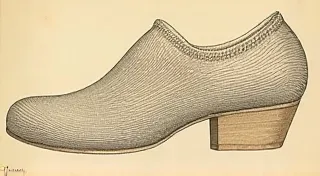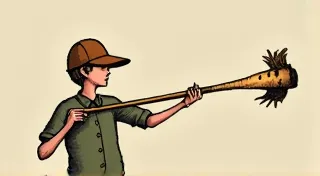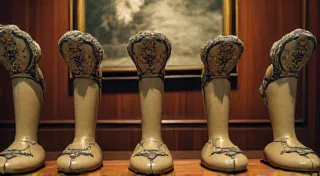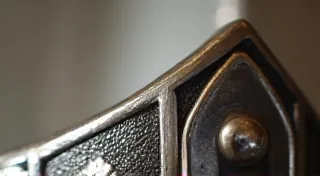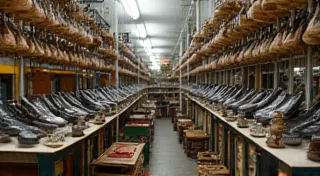Shoehorn Patents: A Look at Early Innovations
The unassuming shoehorn – a humble tool designed for easing the task of putting on shoes – possesses a surprisingly rich history of innovation. Often overlooked as a mere accessory, the shoehorn has undergone numerous design changes and improvements over the centuries. This article delves into the fascinating world of shoehorn patents, exploring the inventive minds behind early designs and highlighting the evolution of this practical and, for collectors, increasingly collectible item. Understanding the patent history offers valuable insights into not only the technical advancements but also reflects the fashion trends and societal needs of the time.
The Pre-Patent Era: Early Shoehorn Designs
Before formal patent systems were widely implemented, shoehorns existed in various forms. Early versions, dating back to the 16th century, were simple, often made of wood, bone, or ivory. They were primarily straight, tapered tools intended to be gently inserted between the shoe and the heel. These early shoehorns served a crucial role, especially with the emergence of more closely fitted shoes and the rise in popularity of high-waisted styles that made foot insertion difficult. Their designs were often dictated by functionality and readily available materials. While we don't have precise patent records for these earliest iterations, descriptions in period documents and surviving examples provide a glimpse into their functionality.
The act of patenting an idea was still developing as a formal system, with variations across different countries. The English Statute of Monopolies in 1624, for example, placed restrictions on some patent-like grants, though the concept of protecting inventions wasn't fully realized until later.
The Rise of Patent Protection: Early Shoehorn Patents
The late 18th and 19th centuries witnessed the formalization of patent systems across Europe and America, and unsurprisingly, inventors began seeking protection for improvements to existing tools, including the shoehorn. Early shoehorn patents aren’t always about entirely new inventions but often concern modifications to existing designs intended to improve functionality, ease of use, or aesthetics. These patents provide invaluable clues about the prevailing needs and design philosophies of the era. The intricate craftsmanship and materials used often served as status symbols, reinforcing the role of these accessories within broader social hierarchies – a concept explored further in Shoehorns and Social Class: A Symbol of Refinement.
Notable Early Inventors and Their Innovations
Let's examine some of the more significant early patent holders in the world of shoehorns. Many names remain obscure, but their inventions contribute to the history and collectibility of these accessories. It’s important to note that many patents were simply assigned to manufacturers, meaning the true inventor may have remained uncredited.
- John Clarke (England, 1789): Clarke's patent (No. 1789) details a shoehorn with a handle that folds, making it more convenient to carry. This was a significant improvement over the straight, unwieldy designs of the time. The fold-out handle design became a recurring theme in subsequent patents, demonstrating its practical appeal.
- Henry W. Leavitt (United States, 1854): Leavitt’s patent (No. 11,403) focused on a shoehorn with a combined "combined boot hook and shoe horn." This design showcased the desire to combine functionality in a single, portable item - a trend reflective of the growing emphasis on practicality and efficiency.
- William L. Perkins (United States, 1868): Perkins’ invention (No. 11,919,378) introduced a retractable shoehorn housed within a decorative case. This design catered to the growing desire for discretion and elegance, particularly among women who wanted to avoid the perceived inelegance of openly displaying a shoehorn. The cases often were made of silver or other precious metals, adding to their value and desirability. Often, these exquisite shoehorns accompanied their owners to the opera box, adding a touch of refined luxury to the experience, as discussed in The Shoehorn and the Opera Box: A Luxurious Pairing.
- Charles A. Holbrook (United States, 1873): Holbrook's patent (No. 143,766) dealt with a "shoehorn with improved handle." His design explored variations in handle shape and material, seeking a more ergonomic and visually appealing grip.
These are just a few examples – numerous other patents existed, each reflecting a specific need or refinement in design. Analyzing these patents reveals a fascinating interplay between practicality, aesthetics, and the changing fashion landscape.
Materials and Design Influences
The materials used in shoehorn construction were often dictated by availability and cost, but also by prevailing design trends. Early versions were commonly made of wood, ivory, bone, and occasionally horn. The Victorian era saw the widespread use of metals, particularly silver, sterling silver, and nickel, often intricately decorated with engravings and embellishments. The intricate carvings and designs reflected the aesthetic sensibilities of the time, influenced by movements like Rococo and Victorian ornamentation.
The shape of the shoehorn itself also evolved. While early versions were primarily straight, subsequent designs incorporated curves, bends, and ergonomic shapes intended to improve ease of use and grip. The development of different shoe styles—from the pointed toes of the 18th century to the more rounded styles of the Victorian era—also influenced shoehorn design. The increasing demand for these beautiful and intricate objects led to fluctuations in their market value over time, which is a complex topic examined in detail in The Value of Vintage Shoehorns: Factors Affecting Price.
Collecting Vintage Shoehorns and Patent Information
For collectors of vintage shoehorns, patent information can be an invaluable tool. Identifying the patent holder, the patent number, and the date of issuance can significantly enhance the value and historical significance of a piece. Original patent drawings, often included in patent records, provide a fascinating glimpse into the inventor’s vision and the construction details of the shoehorn. These records can be found through online patent databases like the United States Patent and Trademark Office (USPTO) and Google Patents.
The Decline of the Shoehorn and its Continued Appeal
The rise of elastic-sided boots and slip-on shoes in the 20th century led to a decline in the necessity of shoehorns, and consequently, their production dwindled. However, the vintage shoehorn has experienced a resurgence in popularity among collectors and those appreciating antique accessories. Their unique designs, historical significance, and craftsmanship make them highly desirable items. Understanding the patent history of these pieces not only enriches the collecting experience but also sheds light on a fascinating chapter in the history of fashion and innovation. Finding these treasures isn't always easy; dedicated collectors often scour auction houses, antique shops, and explore online marketplaces. Our guide on Where to Find Vintage Shoehorns: Auction Houses, Antique Shops & Online provides comprehensive advice for those seeking to expand their collections.
Conclusion
The story of the shoehorn patent reveals much more than just the evolution of a simple tool. It is a microcosm of innovation, reflecting changing fashion trends, societal needs, and the development of intellectual property rights. For collectors of vintage shoehorns, studying these patents provides a deeper appreciation of these charming artifacts and their place in the history of fashion.
